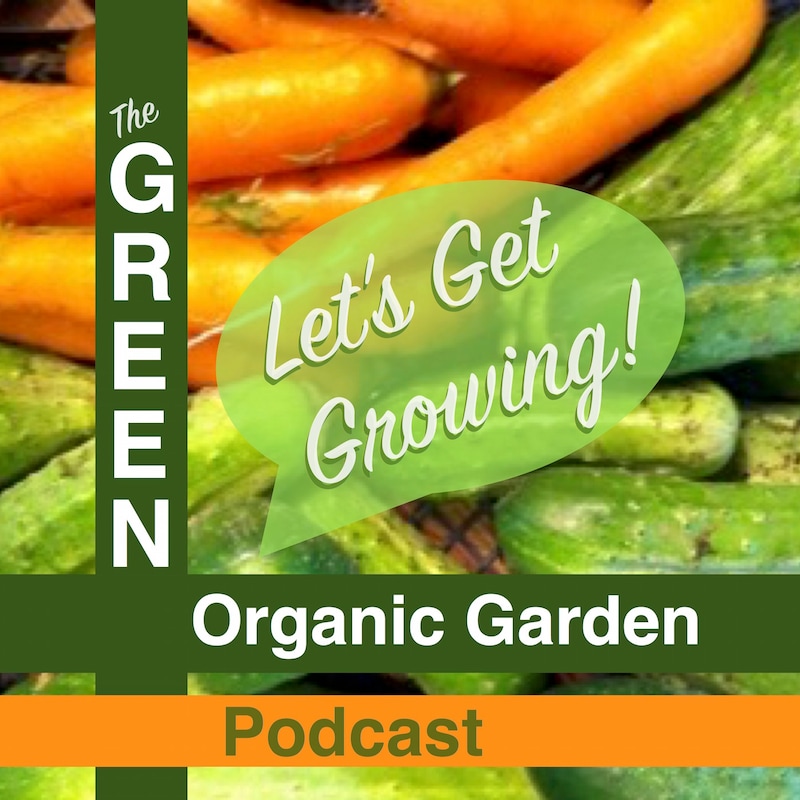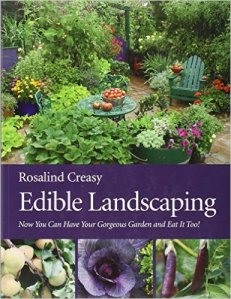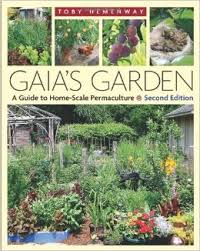
Shownotes
Linda Kelso is owner of LK Landscape Design where she helps people make their landscapes more beautiful, enjoyable, and earth friendly! Today she’s here to share with us earth friendly designs you can implement in your yard!
Tell us a little about yourself.
I’m a landscape designer, I live near Pittsburg, PA, I own my own business. This is my second year with LK Landscape Design. I specialize in using edibles as part of design and using sustainable or native plants.
Landscape design is my second career. I have a bachelors in Psychology, I spent about ten years doing administrative and office management kind of work. Originally I started into gardening as a hobby and it just evolved into this new career for me.
Tell me about your first gardening experience?
My parents always had a small garden, they would grow a few tomatoes or peppers when I was young. My first kind of moment when I connected with gardening was in the winter actually. My parents would receive seed catalogs in the mail, I loved to look at the pictures and imagine the garden I could create, and so, I remember one year I was probably 8-9 years old, and I got some of my dad’s very expensie, off limits to me, graph paper, I grabbed my crayons and colored pencils and I sat and designed my own vegetable garden. I remember doing that for a couple of years. I don’t think any of them made it into an actual garden, I don’t think my parents actually took those and made them into reality, probably because they were pretty elaborate. But that was my first connection to gardening.
What does organic gardening/earth friendly mean to you?
This definition is always evolving for me. Right now it means working with nature then fighting against it. I view nature as a system always that is always trying to maintina balance. I think if you try to work withint that system and maintain that balance you’ll end up successful. When we try to introduce outside elements
non-native insects
nature has to work hard to establishing normal again if it even can. Sometimes we use non-organic methods because they provide the short term easy solution but in a long term they actually cause more problems. So organic solves long term problems.
I have had a lot of guests talk about the health of our soil. And I just went to this conference and that was an underlying theme to protect and care for the health of our soils.
Who or what inspired you to start using organic techniques?
I think that its not just one person or event or thing, kind of been a slow progression
my parents always used a fairly organic approach.
they just had small gardens
they
I grew up gardening without chemical control.
the city itself really inspires me.
©Scarlett Sagraves/Sagravesphoto@gmail.com
The Phipps Conservatory in Pittsburgh has played a huge role in my new career.
Their classes and conventions focused on earth friendly or sustainable techniques. They just started a pilot chapter of the Biophilia Network. I think they are testing it out here first. The Biophilia Network is basically monthly meetings where you can listen to thought leaders and innovators in the organic sustainable movement. They’re like little Ted Talks. I really love those meeetings and attend wheneverr I can. You get to ask them questions an meet others in the
Pittsburg as a whole is there is a whole movement here for that.
Pittsburg to me, I’ve been reading about Pittsburg for like 10-20 years, they are the one of the biggest innovators in the US. They have a huge medical technology and have a huge medical center there right? and I just read something about how they are embracing the green movement. So I am not surprised they are innovators.
About 5 years ago I moved back here, and that’s when I transitioned into this new career.
TED: Technology, Entertainment and Design is what Ted stands for, if you have never listened to a TED Talk definitely check one out!
How did you learn how to garden organically?
Even though I’m a landscape designer, my whole history with gardening was with vegetable gardening. So when I went bak to school for a degree in landscape design. I really wanted to integrate some of that with what I do.
I discovered Rosalind Creasy. She does edible landscape design. She uses edible plants in her landscape designs. Her book is Edible Landscaping: Now You Can Have Your Gorgeous Garden and Eat it Too!
I started down this non-tradtional when I read her book. I started to take classes at Phipps Conservatory in sustainable design. I read other books about it, I decided if I was gonna do this for a living, I wanted it to be about more then earning money, I wanted to do something good and contribute to the environment and help it.
combinging ornamental landscaped. They can be vegetables, herbs, flowers. A lot of what she talks about, if you look a little bit into the permaculture movement, there’s this idea of plants doing double duty. Not just looking nice but having a purpose.
also this idea of n
not just about the tomato that you get, maybe letting things go to flower because some things produce really pretty flowers.
looking at the leaves of the plant
Rosalind Creasy explains it better then I do, she has a lot of books on the topic and a nice website.
Tell us about your landscape and what grew well this year.
About my parents landscape! They did an experiment for me!
They have about 2 and 1/2 acres of property. Whenever I design, I take into account the insects and other animals they support. So on my parents property part of it has always turn into this meadow area. So I asked my dad if he could stop moqing a part of that and I wanted to see if it would increase the number of bees and butterflies etc.
Always lots of butterflies and bees back there When the other neighbors plants stopped blooming, there were always lots of butterflies, moths, and bees,and lots of birds back there but my dad was also happy because it was less mowing for him!
Even simple things like that can make a difference to the animals that
That’s a pretty big piece of land isn’t it? So they must be out of the suburbs where they live?
more rural around where they live,
I don’t think they would get away with that
if you lived in a housing plan or a more suburban plan.
One of your blog posts recently was about the law and design right? Do you want to talk about that at all?
I was just writing that when you design
whenever you do anything on your property, you have to take into account, there are a lot of local ordinances, there are HOAs- homeowner associations. Sowhenever you design something you might think I want to build a deck, there are local ordinances. Sometimes when you hire a contractor, not always, but you have to read the contract carefully, if those ordinances are violated, you as the homeowner might be liable for that. As the homeowner you have to be aware, if you are building a deck or something make sure you are keeping within the law.
Our first investment property was little house in Cut Bank and I was told that even painting the door, could need a permit and we had put up a fence and some trees and built a walkway etc.
Is there something you would do different next year or want to try/new?
I want to use more permaculture techniques in my design. I’m just learning about permaculture now. I think it’s fascinating. It approaches gardening as a system, I kind of think about it that way anyway.
Working with nature in your own backyard. There is a structure called an Herb Spiral are just really beautiful and would look really good in a landscape so my goal is to start using that in the future.
What’s it called again?
An herb spiral. It’s sort of like a raised bed but instead of being like one level, multiple tiers of, it’s literally like a spiral that goes upward
that goes upward that creates little environments for each herb, on the sides so they have a little shelter. It’s really attractive
can put herbs, flowers…
I guess so… except upward.
like a snail shell?
You can make it any size you want. I think anything less then maybe 4 feet at the base would be difficult. I had a client, I was designing one for, the largest part at the base was about 8 feet and each section got smaller and smaller.
I never heard of permaculture till I started this podcast 8 months ago either.
There was a student in one of my classes! He was like you gotta look it up! I was like I’m so busy. When I finally had time to look into it, I was like this is amazing.
Kelly Ware has been in my most downloaded episodes. She’s talking about building a Permaculture Education Center down in Panama where she just moved.
My number one most downloaded episode and I think she is downloaded a lot because she talks about being strategic. I’m so not like that, I’m always standing there with the plant thinking where am i gonna put this.
So how do you start a design?
I always start by interviewing the client then also walking around the property. What I’m looking for is problems they’re having. Maybe there’s a drainage area, or an area where things aren’t growing very well. or maybe they have nosy neighbors and want more privacy or maybe they have a vegetable garden but deer are an issue. So I always start with what the client wants, needs and what problems they are having in their yard.
create a design based on those issues
A lot of times you can’t solve everything. I try to prioritize the needs and the wants, so they have a final design that doesn’t just look pretty but also it serves a purpose
I look at
say they have all these sunflowers they want to plant? How much space do you need? How much space will it need when it’s young but also how much space will it need when it’s grown. and what will it look like 10 or
People who put in shrubs gave them enough space when they were young
what does it look like but also what will it look like 10 years down the road… research and analysis before I ever pick the flowers or other plants out.
People wonder…
if you hire a landscape designer
why would it be so expensive,
they don’t see that behind that there is a lot of research and a lot of analysis that goes into that and a lot of expertise.
It can make a big difference not just money but also frustration in the long run. Probably a big one is for trees. What kind of things do you think about for trees?
I think about the final size of the tree… potential
In terms of the final size I don’t want to plant a 100 foot tall maple or oak tree right next to a house, if that tree ages, or gets damaged, it could damage house if it falls.
a tree that is going to produce a lot of seeds, maple produce a lot of seed can get invasive…
Beyond that I also want to consider how can they help the home owner with their energy bills, can provide shade and if it loses it’s leaves it will let sun in the winter. And you can do that with shrubbery too. When chosing a tree, you have to think about safety, the mess that it might create, or can it be invasive or can it help with energy.
Also the leaves would create compost and passive solar is so huge, people don’t always think about energy saving and where you windows are where your trees are can make a difference in your energy bill.
Tell me about something that didn’t work so well this season.
When I started mn business, Ithoutght I’m just gonna create all edible, or all native, or completely sustainable designs
my clients aren’t ready for that yet, maybe popular landscape plants
mixed with some sustainable, ediclbe plants. is a pretty different way
step by step process I totally get, and if you’re a homeowner, it’s a big risk to pay for and use a design that is different then what the neighbors have. I would rather have a landscape with a few natives or edibles then none at all. I think as clients see how they work and that they aren’t completely off the wall
that’s the sustainable house, it’s not like that at all.
Like whoa what did they just do?
There’s a lot of education with it! As I develop relationships they become more open to using more earth friendly techniques. There is a lot of interest in using raised beds, composting and avoiding pesticides or herbicides. When I do a lot of maintenance work, I try to teach clients they have a lot of questions. try to answer them from a sustainable
Honestly I get a lot of pruning questions…
That’s part of my business, I prune and weed and things like that. So a lot of people don’t understand the right time to prune. I don’t know if it’s like this where you live but in the past generation ir so there was a movement to prune things into geometric shapes.
If you prune a plant like that continuously you can end up killing the plant, and it’s more susceptible to disease and pests, so when a lot of people hire me, I can reviatalize those plants and get them to grow in a way. So I get a lot of questions like why is pruning in the plant into a box killing it? I get some about controlling weeds without the use of herbicides and that sort of thing. Those are probably the most common.
Russ Metge from Salt Lake City, he’s been my downloaded episode 26 talks about pruning trees. Dave Salman down in New Mexico talked about pruning flowering trees in episode 50 .
Something that you find is easy to grow and is generally successful every-time.
I really like to use herbs as ornamentals. They’re easy to grow, and maintains. they’re really pretty
Especially if they
bushy
how sage and rosemary look too
I planted swiss chard as an ornamental,
very little work, the plants were huge by the end of the season! If somebody wants to start incorporating edibles, herbs are a great way to start!
I agree and they have that aromatherapy thing, and the bees love them. First they go to my chives which blooms in the spring and then they move on to my oregano and my sage. Does Rosemary grow flowers? I just got one at the Farmer’s Market this year.
I just planted one this year as well, I really like the look of the leaves. It’s good mix up different textures. Rosemary has this completely different the leaves are just little needles and I like the contrast of that with other broad leaf plants and they smell good too!
And the thing you want to do is grab a leaf and crush it in your hand to smell it.
Something you would steer new gardeners away from that you find is typically challenging to grow.
My answer to that is Japanese Barberry. It’s like my plant nemesis, I really hate it. If you’re not familiar with it, it’s a shrub that’s covered with these tiny sharp painful thorns. People like it because it’s really low maintenance,
pros do not outweigh the cons
Nurseries were recommending it to homeowners. I see it in almost every landscape
As someone who has pruned it
need leather gloves
splinters, really hard to get...





